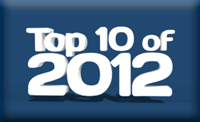HIMSS12 & Stage 2 MU: A Match Made In Vegas


By Ken Congdon, Editor In Chief, Health IT Outcomes
HIMSS12 proved to be the biggest HIMSS yet as more than 37,000 healthcare executives, IT professionals, and clinical leaders flocked to Las Vegas to attend valuable health IT educational sessions and evaluate the latest products and services from more than 1,100 vendors in the exhibit hall. The turnout for HIMSS12 increased 18% over the 2011 event held in Orlando, which previously held the record for highest attendance. I was among the sea of 37,000, but was only able to take in a fraction of what the event had to offer. However, from what I did experience, the following topics seemed to dominate the event:
ACOs — HIMSS12 proved two things:
- ACOs (Accountable Care Organizations) are probably the next big organizational and IT infrastructure shift healthcare facilities will face once EHRs are widely established.
- ACO is definitely the hottest new buzzword in healthcare IT circles.
Several technology vendors on the show floor, particularly EHR and HIE suppliers including Optum, Greenway Medical Technologies, and eClinicalWorks, touted solutions that support ACO enablement. The ACO theme was big at HIMSS11 as well, but it’s clear that the industry was a little ahead of itself last year. This year’s ACO—related solutions are a bit more mature, but it’s still unclear how many of them will ultimately be leveraged in a still emerging and ambiguous ACO landscape.
Analytics — With the growing adoption of EHRs, healthcare facilities are capturing a massive amount of electronic patient data. The next step, according to many industry experts and technology vendors, is to organize, manage, and measure this data. A key means in which to accomplish this is through the use of business intelligence and analytics technologies.
The importance of analytics was the focus of the McKesson media breakfast I attended at HIMSS and was also the primary message being delivered by technology vendors such as MEDSEEK, Siemens, and NextGen. Effective analytics will be instrumental at improving hospital performance and patient care by alerting caregivers and other key stakeholders when the hospital is in danger of falling outside of core measures (e.g. time to discharge, readmit rates) that could negatively impact the patient experience as well as hospital finances.
Clinical Mobility — Providing clinicians with the ability to perform more job duties at the point of care or while on the move was also a major focus at HIMSS. Mobile computing manufacturers including Panasonic, Motion Computing, Motorola, Honeywell, and Fujitsu all showcased their latest healthcare—specific devices at the event. Mobile cart and workstation vendors such as Rubbermaid Medical Solutions, Metro, CompuCaddy, and JACO also demonstrated how their solutions help to optimize staff productivity and accuracy by allowing clinicians to perform data entry and medication administration functions at the patient bedside.
Notable mobility advancements didn’t just come from hardware manufacturers, but software developers as well. For example, select EHR vendors, including Allscripts and CliniComp, introduced mobile extensions of their EHR platforms at HIMSS12. Allscripts, for example, demonstrated its mobile EHR solution, tentatively called “Wombat” at the event. The vendor designed the product exclusively for the iPad, directly involving Apple in the development process. Wombat has created a lot of buzz and excitement among the company’s customer base of nearly 180,000 physicians. While the tool does not have the full functionality of Allscripts’ traditional EHR, it compensates for this by being responsive to physician culture, with considerable resources channeled toward ensuring that it integrates well with the everyday lives of physicians.
CliniComp also announced a mobile extension of its Essentris EHR platform called Mobile Essentris Perinatal. This product is the first in a suite of mobile apps that CliniComp plans to introduce to the marketplace in 2012, available for use on mobile devices such as smartphones and tablets. These mobile apps allow clinicians to interact with the complete Essentris EMR from anywhere, seamlessly and securely.
Cloud Computing — The need for the healthcare industry to move data to the cloud was another huge theme at HIMSS12. Rick Cnossen, director of health information technology at Intel summed up the importance of this movement best.
“The prolific adoption of EHRs is creating an explosion of digitized patient data that will require 20 times the computing power to store and manage over the next decade,” says Cnossen. “Hospitals can’t just buy 20 times the servers to manage this data. It is too costly from an infrastructure and energy standpoint. The healthcare industry has no choice but to move to the cloud.”
Other prominent IT infrastructure vendors, including Dell and EMC, shared Cnossen’s sentiments. However, it wasn’t just the computing and storage giants that were advocating cloud computing. Niche technology vendors such as Merge Healthcare and Vitera Healthcare Solutions were also singing its praises. Merge Healthcare, a provider of enterprise medical imaging solutions, promoted a move to the cloud by introducing Merge Honeycomb — a cloud—based medical image archive and sharing network — at HIMSS12.
Likewise, Vitera Healthcare Solutions, an ambulatory EHR vendor formerly known as Sage Healthcare, introduced its Intergy Cloud solution — a cloud—based EHR program intended for the one to three—doctor practice. The benefit to moving to the cloud for these small practices is not so much tied to controlling storage scalability, but more to offer practices a cost—effective EHR solution with little to no upfront infrastructure costs.
HIMSS Shares Spotlight With Stage 2 Meaningful Use
As you can infer from the summary above, there was no shortage of compelling subject matter on display at HIMSS12. However, much of this featured content was overshadowed by the anticipation surrounding the announcement of the proposed Stage 2 Meaningful Use (MU) requirements. Expectations were that this announcement would be made on Monday, 2/20 or Tuesday 2/21 to coincide with the start of HIMSS. However, CMS (The Centers For Medicare and Medicaid Services) didn’t announce the proposed Stage 2 requirements until late in the day on Thursday, 2/23.
Once the Stage 2 requirements were finally released, the consensus on the show floor was that the proposed rules aligned with industry expectations and no huge surprises were included in the policy. Essentially, Stage 2 MU is designed to “raise the bar” and provide a new set of incremental steps to advance health IT adoption. For example, in Stage 1 MU, eligible outpatient providers (e.g. physicians and nurse practitioners) had to meet 15 “core” requirements and 5 of 10 “menu” items. Eligible hospitals, on the other hand, had to meet 14 core requirements and 5 of 10 menu items. In Stage 2, CMS proposes that eligible providers now meet 17 core objectives and 3 of 5 menu items, while hospitals must now meet 16 core objectives and 2 of 4 menu items. In addition to incremental changes to these criteria, the Stage 2 MU regulations also contain other important highlights including:
- The requirements for CPOE (computerized physician order entry) have increased. Now, the majority of orders that providers write must be done electronically.
- HIE (health information exchange) becomes a reality. In Stage 2, providers must demonstrate that they electronically exchange patient data (including medical images) with external facilities.
- In Stage 2, quality reporting becomes a more important Meaningful Use criterion. CMS has laid out a host of quality measures that may become requirements for reporting through the EHR.
While no surprises were present in the proposed rules for Stage 2 MU, most of the folks I spoke with at HIMSS thought this was a good thing. “It’s clear CMS is listening to both the providers and technology vendors in the healthcare industry, which is great,” says Justin Barnes, VP at Greenway Medical Technologies and chairman emeritus of the Electronic Health Record Association. “The proposed Stage 2 requirements strike a good balance in that they emphasize the right points for increased health IT adoption, while not increasing demands so much that it becomes too difficult for the industry to keep pace.” We shall see if this consensus is shared by the medical community at large over the next 60 days as the industry provides its feedback during the established commenting period. However, it’s my opinion that the final Stage 2 rules will look very similar to the proposed requirements announced on 2/23.
